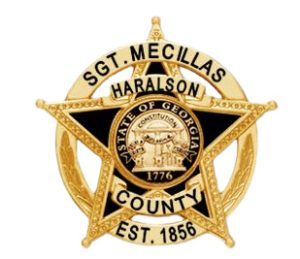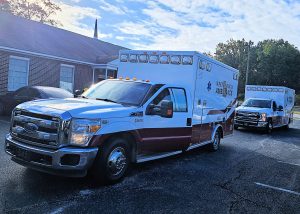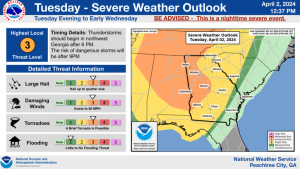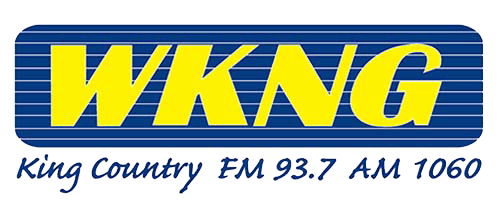Newnan, GA A smooth, safe and efficient transportation network will be key to future economic growth and progress in the Three Rivers region, according to a new report released today by TRIP, a national transportation research nonprofit. The report, Moving the Three Rivers Region Forward: Road and Bridge Conditions, Traffic Safety, Travel Trends and Funding Needs in the Three Rivers Region, is one of a series of 12 regional reports that examines travel and population trends, road and bridge conditions, traffic safety, congestion, and transportation funding needs in the Three Rivers Region, which is located in the northeast corner of the state and includes the following 10 counties: Butts, Carroll, Coweta, Heard, Lamar, Meriwether, Pike, Spalding, Troup and Upson.
TRIP surveyed Georgia counties in late 2019 and early 2020 regarding the condition and funding needs of their transportation system. According to results of that survey, 22 percent of county-maintained roads in the Three Rivers region are in poor condition. Current funding will only allow for eight percent of the miles of county-maintained roads in need of resurfacing and seven percent of county-maintained roads in need of reconstruction, to be addressed this year. In fact, the amount anticipated to be spent by Three Rivers area county governments in 2020 on highways and bridges is only 34 percent of the total amount needed.
Click below for the full report, news conference recording, infographics and video interview footage with report authors:
TRIP_Moving_Georgia_Forward_Report_Three_Rivers_November_2020
Georgia Department of Transportation (GDOT) Commissioner Russell McMurry said, In 2018, our great team at GDOT finished over 90 percent of our projects under budget, even as weve seen tremendous political leadership in taking Georgias transportation infrastructure investment to the next level. All the same, as one of the fastest growing states in America, we know that our future needs far outstretch the available public resources. The data in these reports really helps quantify that need in a clear, concise way that will enable us to make wise strategic decisions about future investments.
According to the TRIP report, 16 percent (164 of 998) of locally and state-maintained bridges in the Three Rivers region are rated as deficient. Bridges that are rated as deficient meet at least one of the following criteria: significant deterioration of a major component of the bridge; restriction to carrying only lighter-weight vehicles; or a carrying capacity of 18 tons or less which restricts larger commercial vehicles. In the Three Rivers region, 52 bridges have significant deterioration to one of the major components, 113 bridges have a carrying capacity of 18 tons or less, and 133 bridges are restricted to carrying only lower-weight vehicles.
The TRIP report includes a list of the 40 most deficient bridges in the Three Rivers region, based on the number of categories in which a bridge ranked deficient and average daily traffic (ADT). A list of the 10 most deficient Three Rivers region bridges is included below.
The Three Rivers Region is a significant corridor for freight traffic throughout Georgia, and as such, we are tremendously grateful for the progress Georgia has made over the last decade, said Candace Boothby, president and CEO of the Newnan-Coweta Chamber. Transportation investment, improvement, and expansion is a critical component of workforce growth and economic development success in our community, and we are excited to continue that progress into the future. That continued success begins with awareness of opportunities for growth, as this report clearly demonstrates.
A total of 460 people were killed in traffic crashes in the Three Rivers region from 2014 to 2018, an average of 92 fatalities per year. The Three Rivers regions traffic fatality rate of 1.36 fatalities per 100 million vehicle miles of travel in 2018 was higher than the statewide fatality rate of 1.14.
Improving safety on Georgias roadways can be achieved through further improvements in vehicle safety; improvements in driver, pedestrian, and bicyclist behavior; and, a variety of improvements in roadway safety features.
Under the strong leadership of Governor Brian Kemp, Speaker David Ralston, and Lt. Governor Geoff Duncan, Georgia was yet again ranked as the number one state in which to do business, said Georgia Chamber CEO Chris Clark. That continues the previous decade of strong leadership, and we know that one critical component of that economic success is the quality of our transportation network. As we look to a future that will catapult us to the fifth largest state in America by 2030, we know that transportation investment will only grow as a pillar of our economic success.
Reliable highway access is critical to the economic development of the Three Rivers Region. At a time when a significant increase in freight deliveries are forecast for Georgia, the quality of the regions transportation system will have a significant impact on its ability to attract economic development. Every year, $843 billion in goods are shipped to and from sites in Georgia, mostly by trucks. Seventy-six percent of freight delivered to or from sites in Georgia are shipped by truck and another 14 percent are shipped by multiple modes, including trucking. The value of freight shipped to and from sites in Georgia, in inflation-adjusted dollars, is expected to increase 115 percent by 2045 and by 89 percent for goods shipped by trucks. But, the ability of the Three Rivers regions freight transportation system to efficiently and safely accommodate the growing demand for freight movement could be hampered by deficient roads and bridges, including bridges that are not able to carry large commercial vehicles.
A robust and reliable transportation system that is maintained in good condition, can accommodate large commercial vehicles, and is reliable and safe is vital to the quality of life of the Three Rivers regions residents, the success and growth of businesses, and the positive experience of its visitors, said Dave Kearby, TRIPs executive director.

















